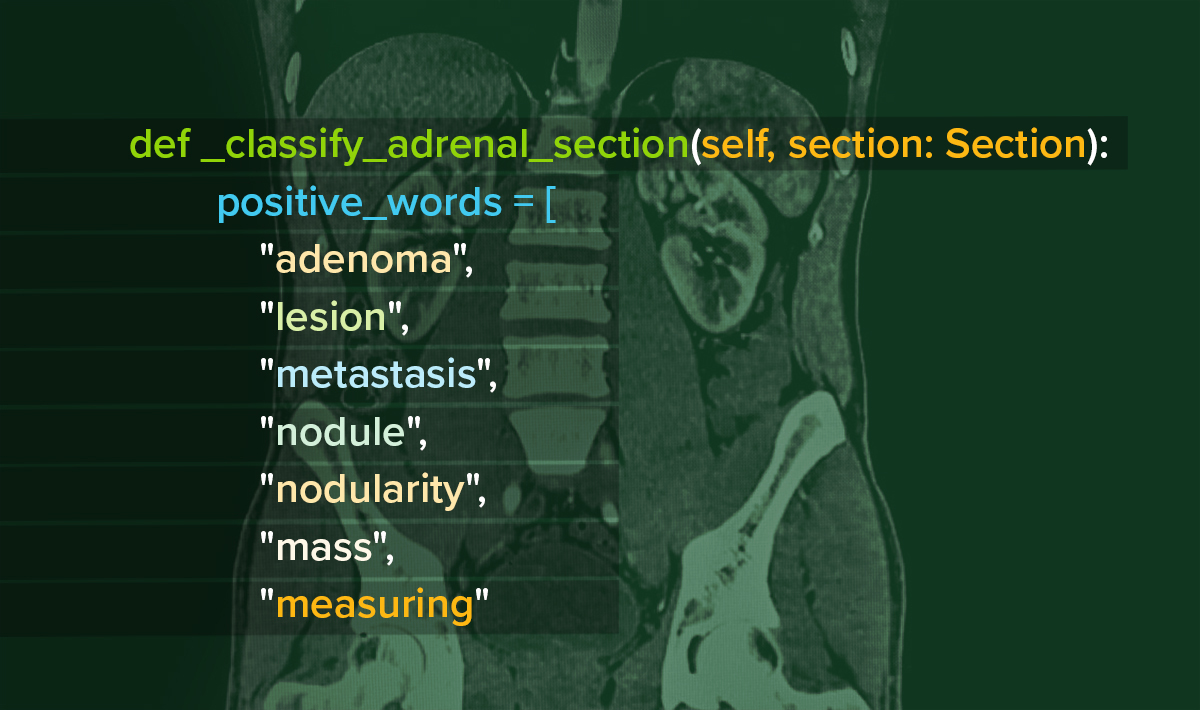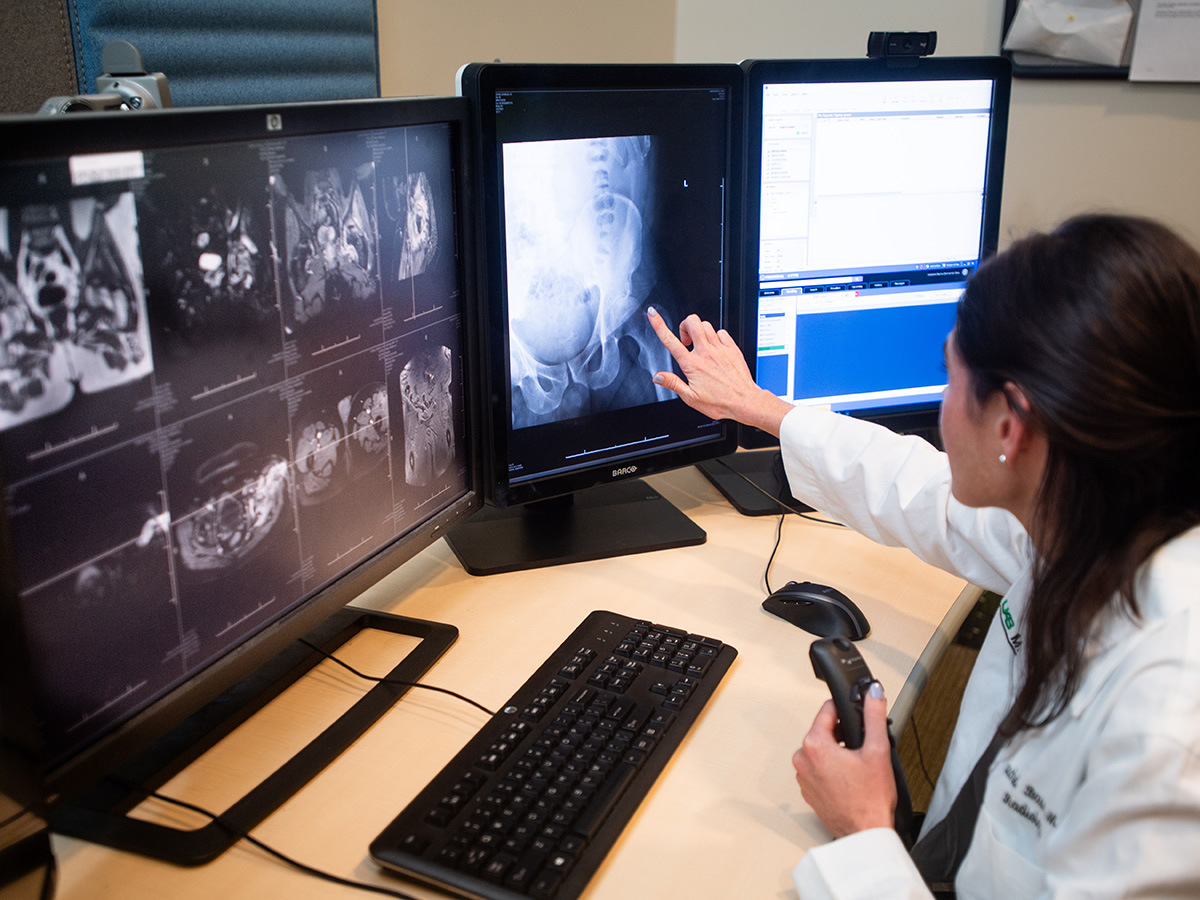
 An NLP-informed AGI clinic is a viable approach to efficiently improve the systemwide quality of care for patients with AGIs.Researchers at the University of Alabama at Birmingham recently published a study demonstrating how natural language processing techniques powered by artificial intelligence, combined with dedicated human personnel, can flag unusual findings in radiology images and connect patients with follow-up care. The work, pioneered in nodules on the adrenal glands, has many applications.
An NLP-informed AGI clinic is a viable approach to efficiently improve the systemwide quality of care for patients with AGIs.Researchers at the University of Alabama at Birmingham recently published a study demonstrating how natural language processing techniques powered by artificial intelligence, combined with dedicated human personnel, can flag unusual findings in radiology images and connect patients with follow-up care. The work, pioneered in nodules on the adrenal glands, has many applications.
The patients who are seen at UAB’s AI-powered adrenal clinic typically start out seeking care for something else, such as a scan after a heart attack or car accident. While reading the image, a radiologist may find something unusual on the patient’s adrenal glands — small, triangle-shaped organs that sit near the top of the kidneys. The mass or nodule is called an adrenal gland incidentaloma, or AGI, because it was found while looking for something else. It is unlikely to be cancerous; but in most cases, it is something to be investigated.
The adrenal glands produce powerful hormones such as cortisol, adrenaline, aldosterone and some sex hormones. The AGI could be pumping excess hormones into the patient’s body, raising their blood pressure, and increasing their risk of stroke, high blood pressure, diabetes complications, bone disease and other serious problems.
“Not everyone with high blood pressure or diabetes has an adrenal nodule; but for people who do have this hormone hypersecretion, to think that an outpatient operation can cure your high blood pressure or improve your diabetes is amazing,” said Brenessa Lindeman, M.D., associate professor in the UAB Department of Surgery and medical director of UAB’s Adrenal Gland Incidentaloma Clinic, which was launched in 2022.
Lindeman is senior author of a paper published in the World Journal of Surgery in December 2024 that presents a solution to this pressing global problem. Using a blend of computer science, technology and human persistence, the authors have developed a sustainable method to find and engage with patients who have AGIs and connect them to care. The technology side relies on natural language processing, or NLP, “an artificial intelligence tool used to understand human language in a computational setting through the recognition of certain words and phrases,” the authors explain. The human side comes from a dedicated nurse practitioner who contacts the patients identified by NLP, tells them about the AGI Clinic and guides them through the evaluation process. Both approaches have been tried before, Lindeman points out; but this is the first paper to describe what happens when they are combined.
In one year, from March 2022 to February 2023, the UAB team identified 899 patients and invited them to the AGI Clinic; 382 patients were seen in the clinic, and 322 were included in the intervention cohort. Of those, 99 percent underwent biochemical testing, and 40 percent underwent adrenal-specific imaging. Sixteen patients underwent adrenalectomy — a minimally invasive outpatient surgical procedure to remove the AGI.
“In this report, we have demonstrated that natural language processing can be successfully utilized to search thousands of radiology reports to efficiently identify patients with AGIs,” the authors write. “An NLP-informed AGI clinic is a viable approach to efficiently improve the systemwide quality of care for patients with AGIs.”
The researchers are expanding their technique to identify other incidental findings on radiology imaging that are often lost to follow-up. When a patient has an AGI show up on their scan, they are flagged for Haleigh Negrete, the nurse practitioner at the clinic. She calls each patient, informs them of their abnormal imaging results, and talks to the patients about what the adrenal gland is or what it makes. She explains the long-term effects of these hormones, including stroke, diabetes, high blood pressure and bone disease to help patients understand why they may need to get the AGI checked out. She then asks if they would be willing to come in to follow up on the finding. Not all the visits require a trip to UAB. The staff uses a mixture of in-person and telehealth care. In many cases, testing will show that the AGI is not producing hormones or having any other ill effects, giving patients, and their caregivers, peace of mind.
“The Department of Radiology is really excited about the possibilities we can get to,” said paper co-author Srini Tridandapani, Ph.D., M.D., professor and interim department chair. “In some ways, we are changing the way we practice based on these outcomes. We are developing programs to identify these incidental findings and establishing the clinical partnerships to connect patients to appropriate follow-up.”
The study was funded by the UAB Health Services Foundation General Endowment Fund. Samuel Galgano, M.D., serves as the principal investigator.